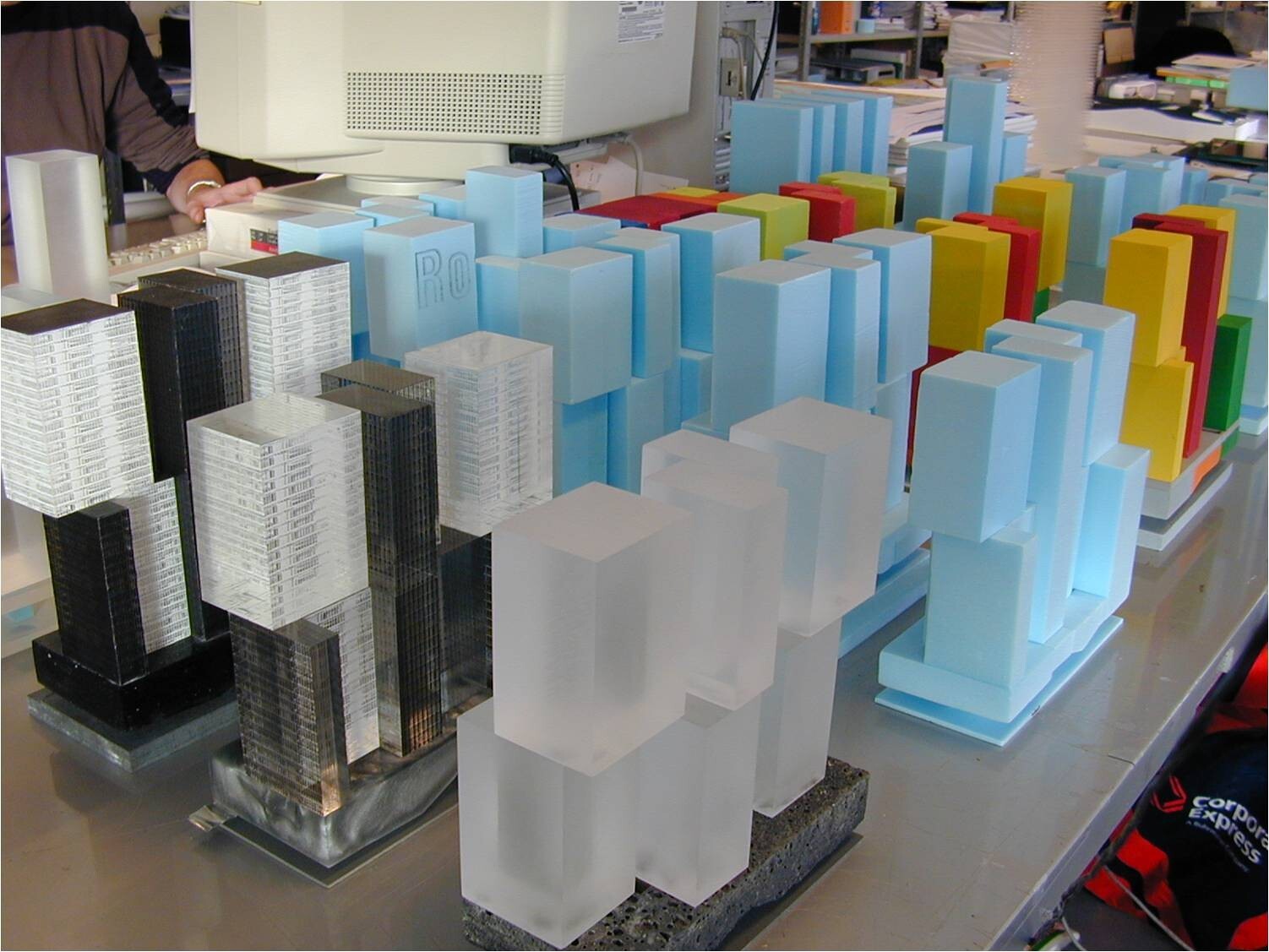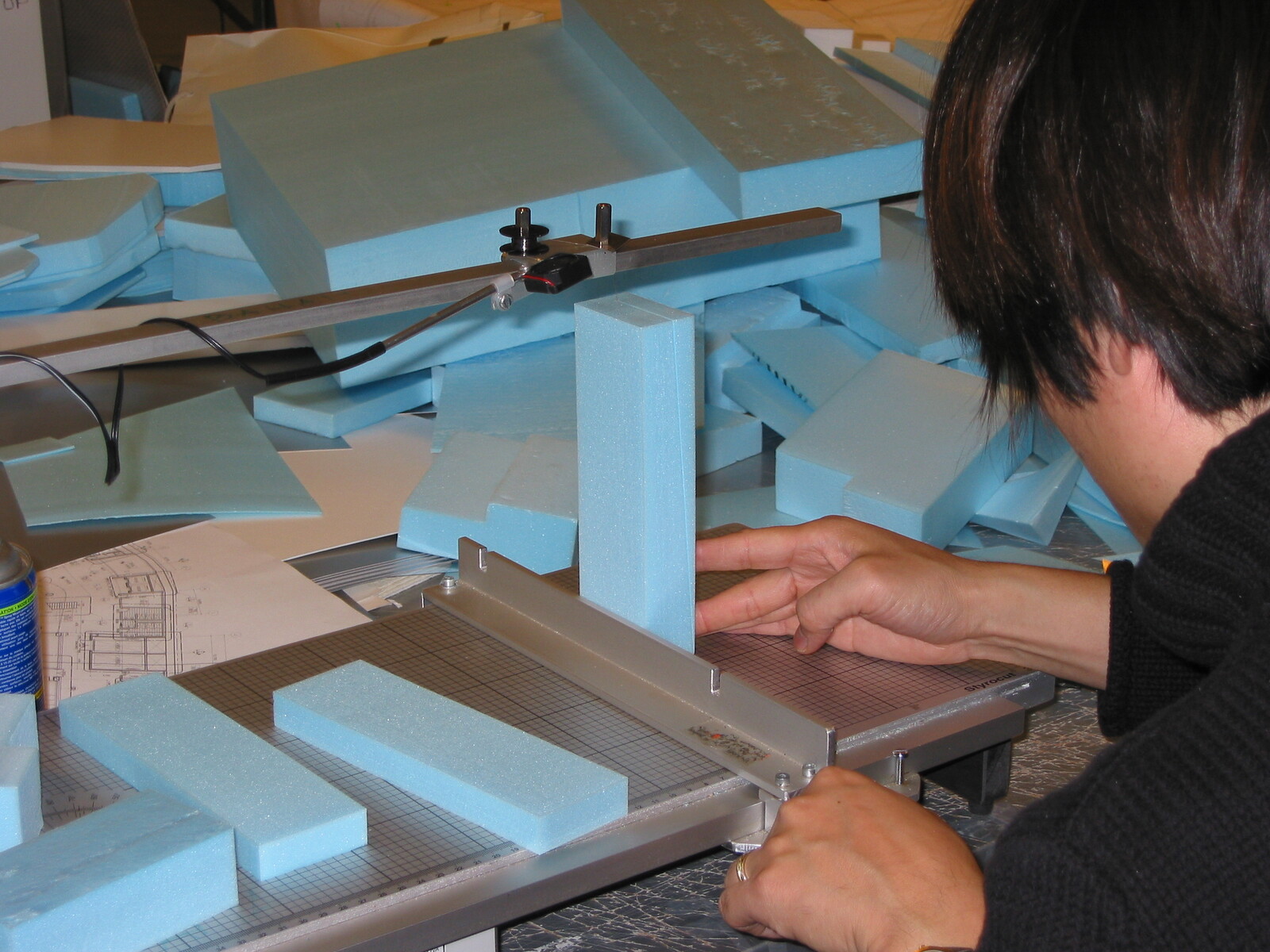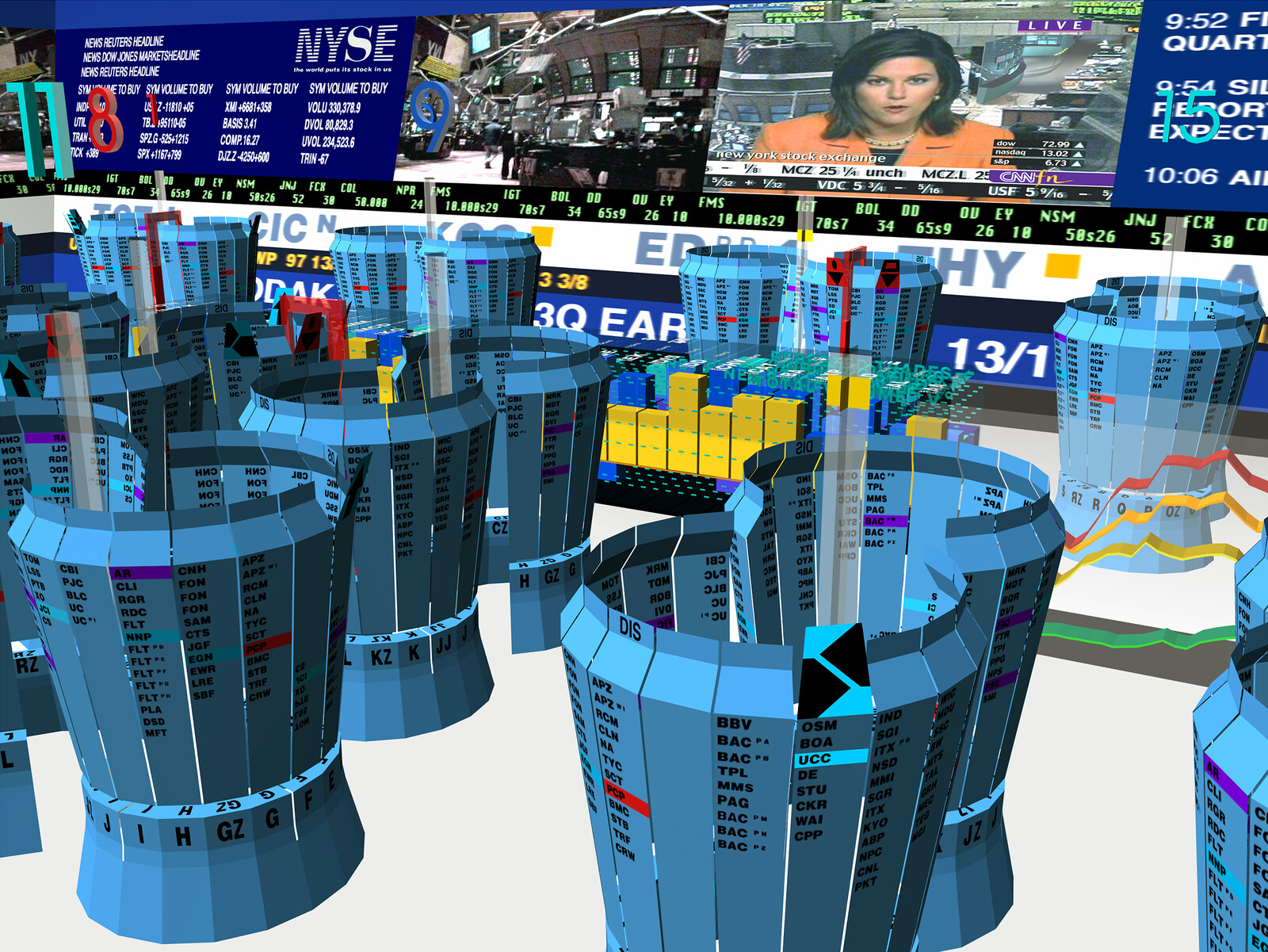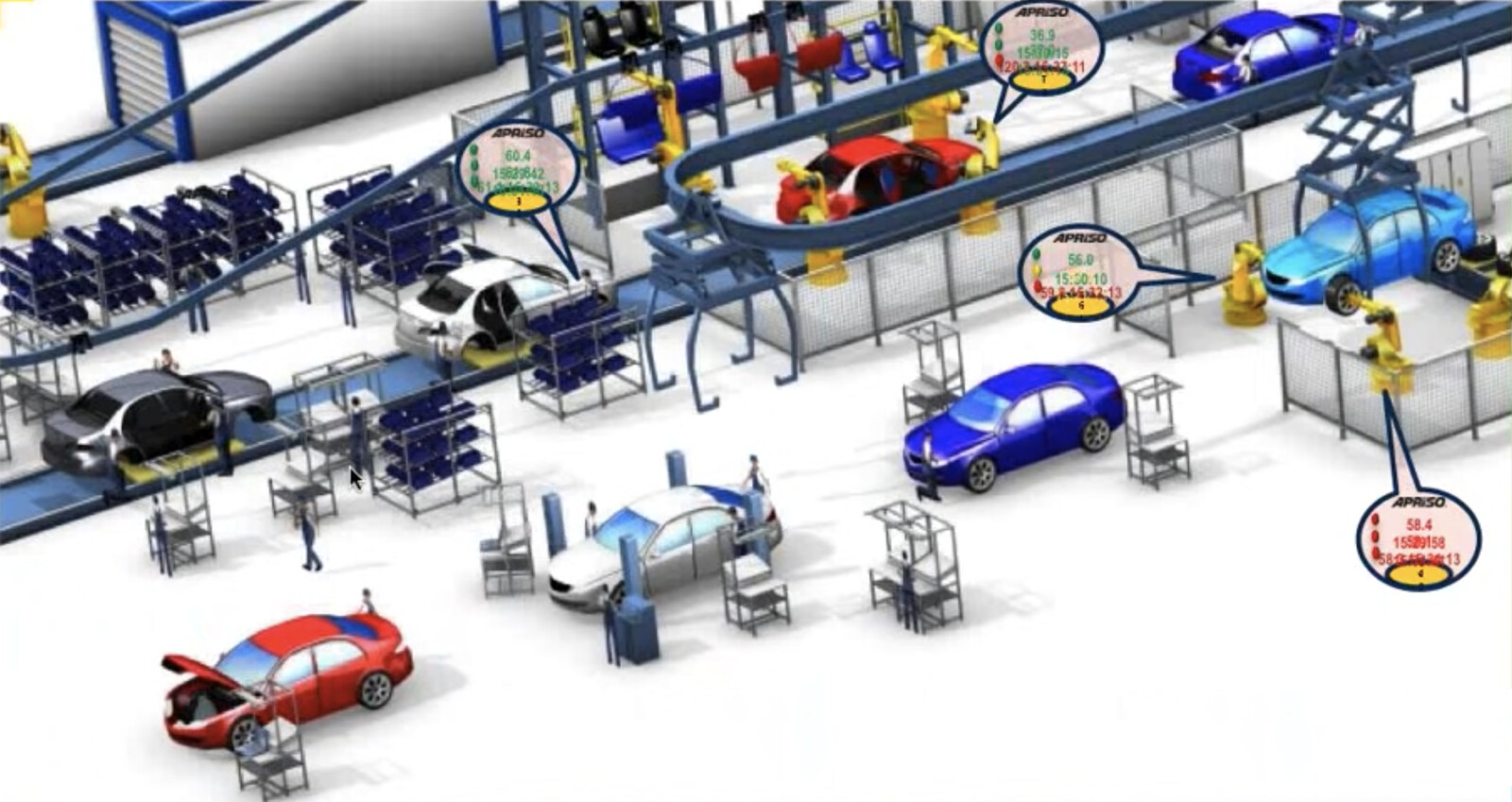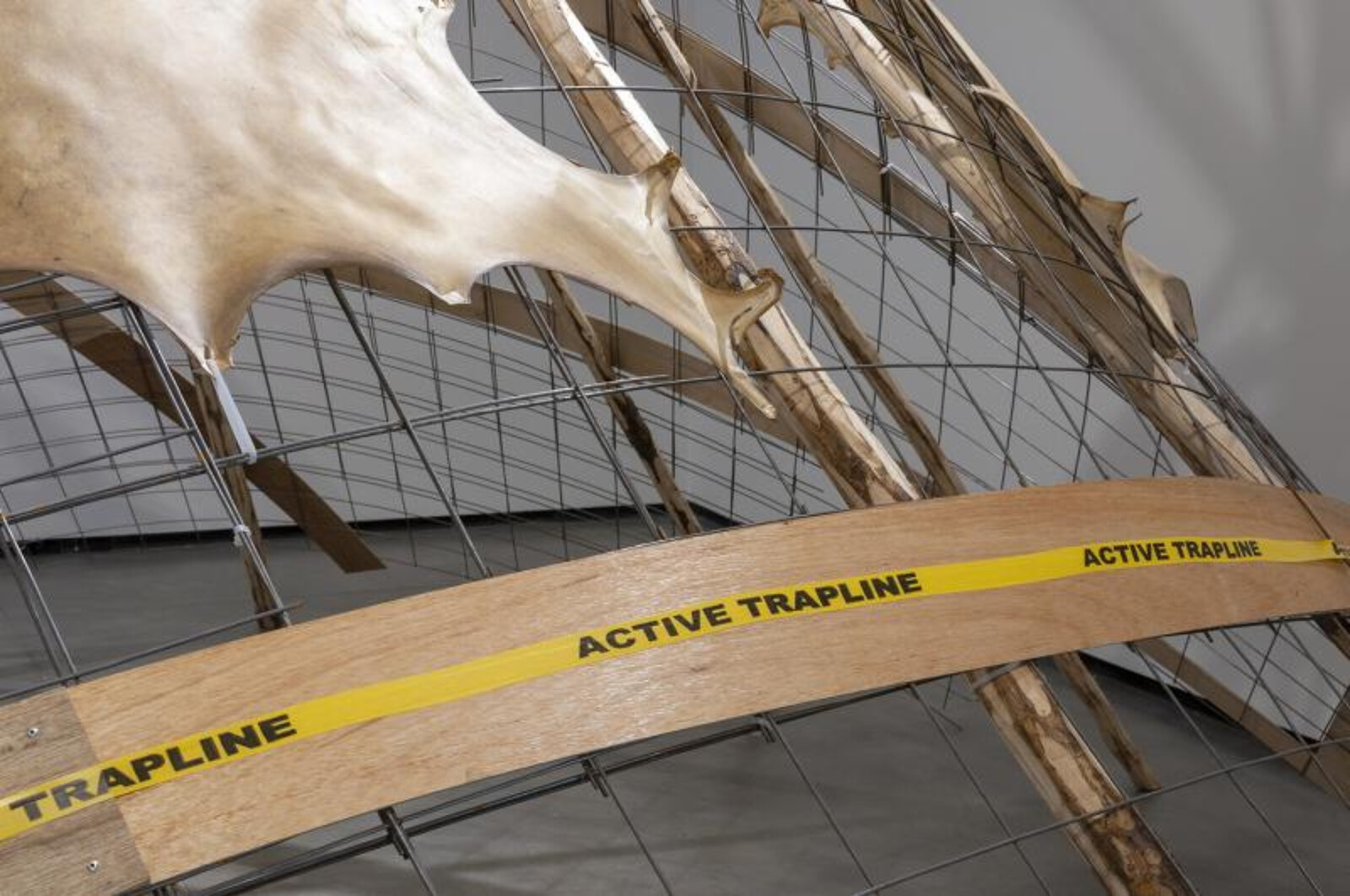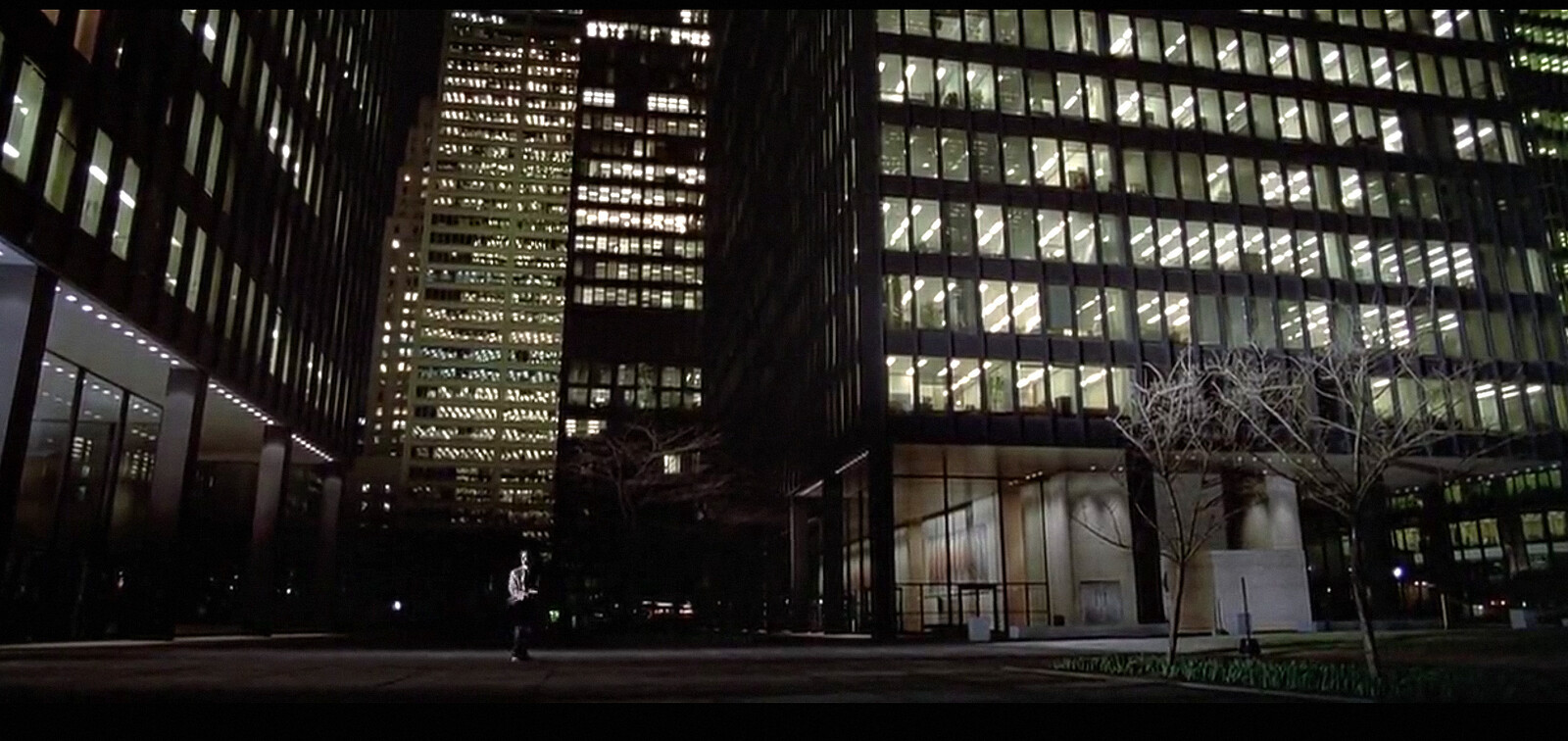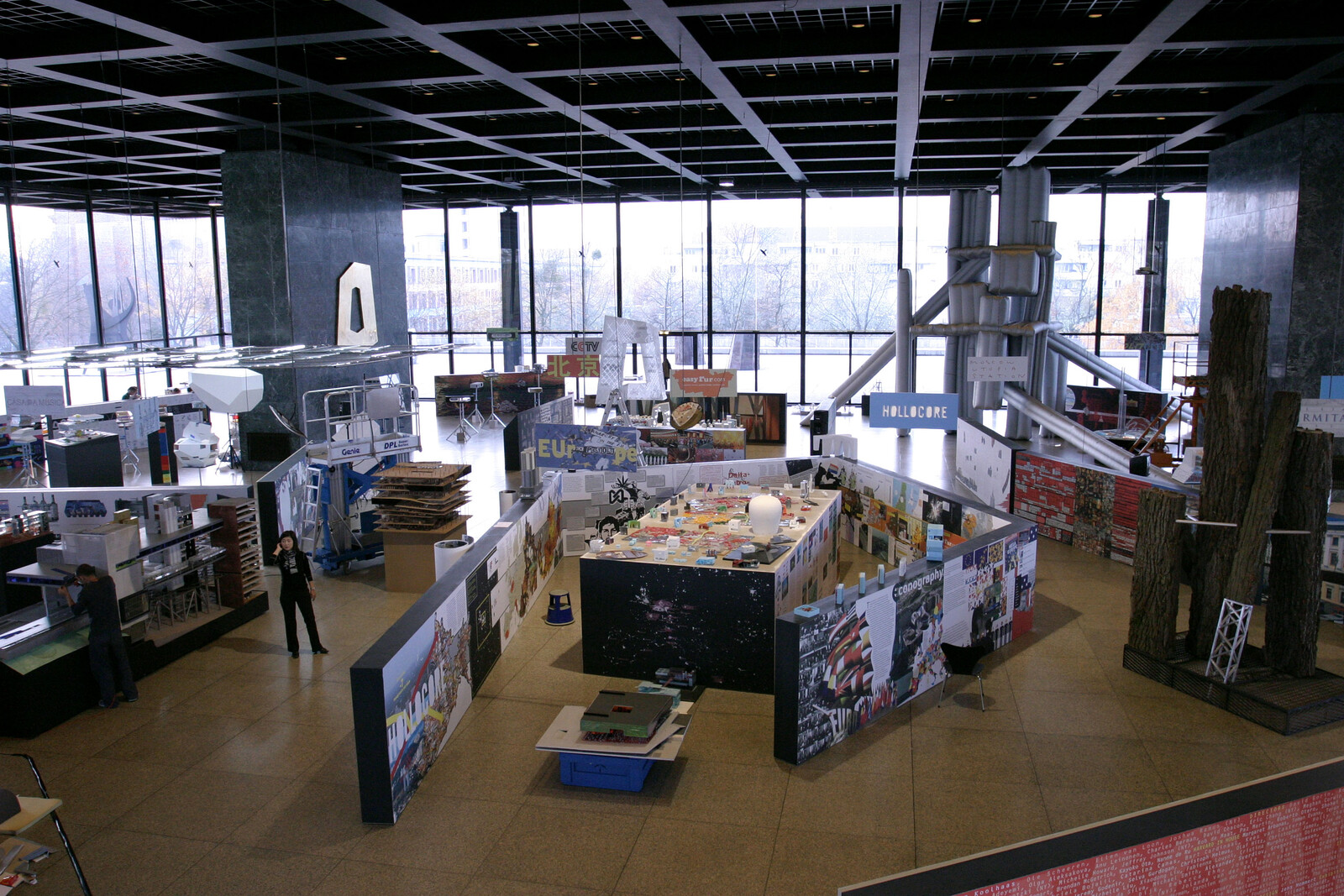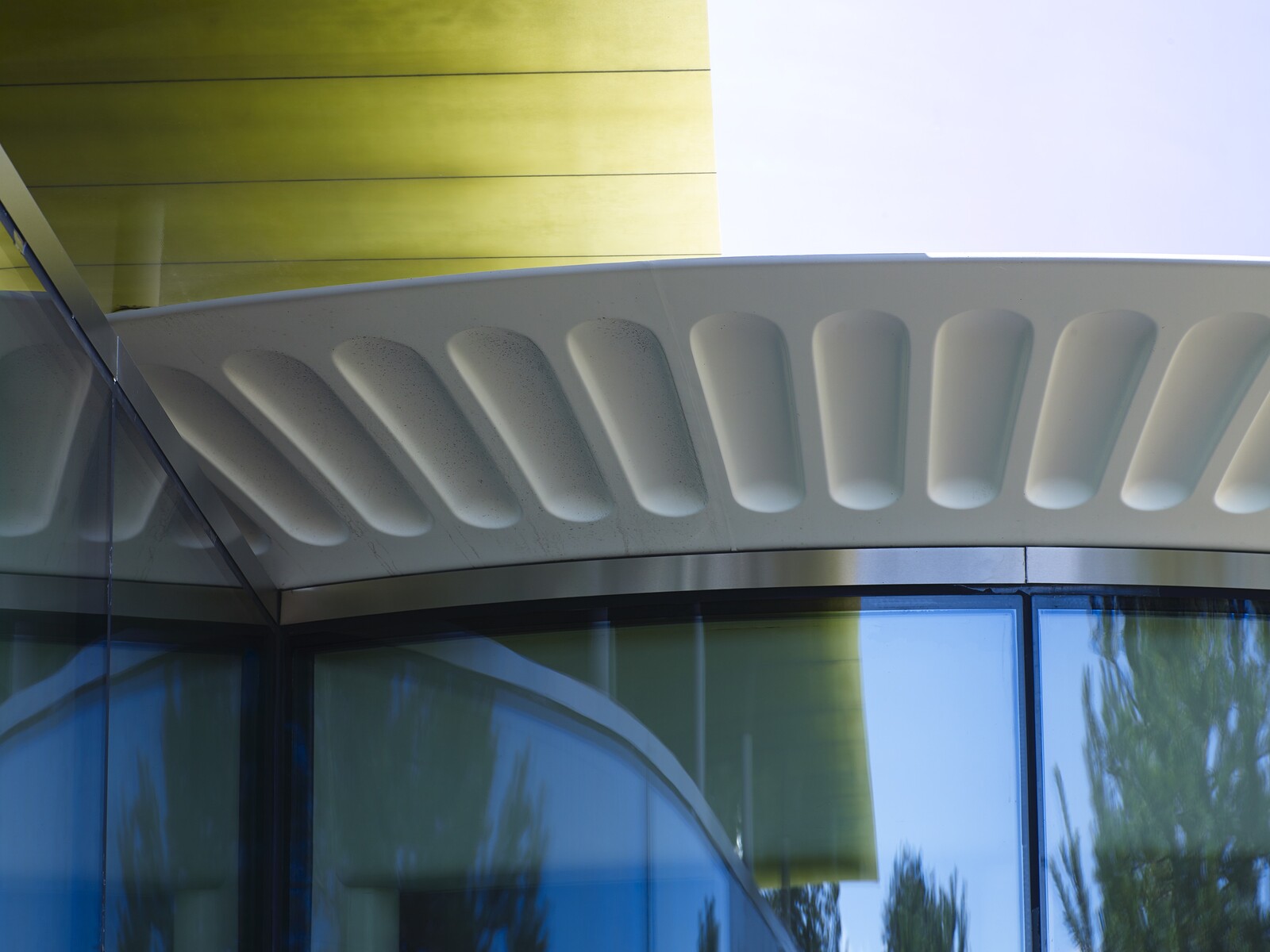Covid-19 radically altered the day-to-day reality of architectural practice and made architects rethink the conditions through which cities are designed. Causing unprecedented interruptions, it forced architects to replace the liveliness of model-making and face-to-face design discussions with online work on flat screens. Unable to gather in the office, designers worked from a distance: group meetings around scale models, or foam-cutting and conversations with materials and shapes in the model-making shop became forgotten rituals, missed by many. The body in design was gradually diluted. Design communication commonly expressed with swift movements around models was replaced with disembodied gestures and calculated facial expressions. This pandemic condition of practice revealed the extent to which designers’ thinking depends on scale models.
Architectural models are commonly produced in the spur of the moment and are intended to act in the present. Models are an important medium of design creativity and are commonly considered a powerful representation of architectural ideas and concepts. The literature on the expressive capacity of models is abundant: models convey internal creative energies, translating the imaginary project in the head of an architect into physical and tangible form;1 models operate as immediate comprehensible means of communication among architects,2 or as guides for workers in construction;3 models are tools for narrating buildings by collecting and articulating the spatial information about them4 in order to explore the relationship between the site and the surrounding environment5 or to create a comprehensive view of architectural history;6 models can function as powerful instruments for the presentation of a building to larger audiences of non-specialists, clients, and sponsors who have difficulty visualizing it.7 Long is the list of what models can express and communicate once they are made.
However, when we follow models in action and designers at work, the complexity of model-making as a social and epistemic practice among collectives of reflective practitioners is bewildering.8 Tracing those practices allows us to witness the little steps of making, the challenges, the struggles, and workaday choices. We may also witness how the course of action is constantly interrupted by the intrusions of all those nonhumans that designers depend on: the disobedient model, the broken foam cutter, the recalcitrant wooden material or cardboard. Indeed, it is hard to imagine architects at work without them and their immediate presence: the spontaneity of exchange, the interventions, the mistakes, the little steps, and the many surprises that arise in the process of making. Just as drawings are not just ways of presenting the ideas located in the mind and the imagination of an architect,9 models act as powerful epistemic tools in a complex and collectively shared space.
Little Steps
While the expressive power of models is not to be denied, models are hueristic tools for thinking. What the pandemic revealed so sharply is the specific capacity of models to expose the little steps and small variations in design ideas. For kevin daly Architects, physical model-making is the “lingua franca that communicates across the hierarchy of the office workflow.” During Covid, model production shifted from an everyday, iterative undertaking focused on studies and multiple approaches to the completion of “finished” models that no one finds completely satisfactory. According to Kevin Daly, architects “miss the routine reveal of small steps, and the edits and course corrections that are implicit in seeing in the small variations on central ideas.”10 Kevin’s experience has been echoed by many other practices around the world.11 Some, such as Laboratorio Permanente in Milan, missed the togetherness around their “common detective wall.” Others missed “the experience of an entire team standing around and seeing the same physical thing at the same moment” and the shared consensus that could emerge around the model. The incremental emergence of ideas as things are pinned up on walls or as a scale model changes shape in their hands—as something is transmitted between hands and materials—are all experiences that cannot be recreated on Zoom.
It is often assumed, following the long Humean tradition, that ideas emerge ex-nihilo; that imagination happens to us, often in mysterious ways; that we as creators happen to stumble on the unexpected. However, having followed architects at work over the past twenty years or so, I have witnessed that designers’ minds work differently, with specific situated material practices of model-making, sketching, and rendering, among others, preparing the ground upon which architects might stumble. Using models, shaping and re-shaping, slicing and assembling pieces, designers organize the possibilities for new forms, for new ideas or buildings. Models are not just expressive devices but tools for thinking. Moreover, making and thinking are not two autonomous operations. Instead, they happen simultaneously. Models in the studio play an active role for conducting experiments, measurements, and tests, generating new knowledge of the building-to-be.12 Working, study, and experimental models help designers figure things out and undo mistakes. In both form-finding and repair, change can be met by adapting the model form or improvising with it. In this process of adjusting, the very incompleteness of models teaches us something. Models challenge both the skills of designers and the very limits of built form. They stimulate creative thinking as much as with their flaws and limitations as by their revelatory powers. Models engage us, as designers and thinkers, in intuitive leaps into the unknown. Yet, this process happens incrementally, by little steps.
Follow Shiro and Victoria as they cut foam in the office of OMA in Rotterdam, or Kevin and his team as they gather around the models in their practice in LA, and witness that there is no one human, no single pilot driving the process, but rather an assembly of things. A world of design contingency unfolds in an office, afforded by different spatial configurations. Here, and only here, models themselves play that “piloting” role. And it is precisely there, in that symmetric dialogue of humans and things, that design happens. In this magical now, neither the architects nor those things are acting on their own. Instead, models and architects circulate together to give a building and idea a reality, amplified and strengthened. There is no plan, no linearity. Instead, there is a “monster”—a table of models, a wall full of things—that constantly questions and challenges the agents of creativity.13 The “mountains of models and model materials” evokes the presence of a materialized process of thinking together. On the “working wall” or “table of models,” the collective brain of designers at work is displayed. Walls and tables afford the possibility to read the movements of each other’s hands and decipher the meaning of these movements, to witness how “something” is passed from drawings to models, from models to designers, and from one designer to another in a shared space. It is this material disposition of things and its capability of stirring design creativity that was missed in the silence of pandemic design practice.
Models in Plural, in Adjacency
A building attests to its presence through its models, versions of versions, series of copies, all together in these intensive variations. Models in plural have enjoyed an increased scholarly interest in recent years,14 parallel with the growing reflexivity of architectural practitioners on the sheer proliferation and use of models in practice,15 and the rising realization of the importance of these architectural model collections.16 Each has its own sparkle and presence that is simultaneously singular and essential; however, they are all to be witnessed and experienced together. Model tables get crowded with things in different way. Watch Erez making a model: “Sometimes you do something and then by mistake, you say ‘oops,’ and you put it aside, on the table of models, and somebody sees it and sees another idea in what you have done.” In another moment the table is filled in with models illustrating different schemes developed in response to a client’s brief; the newly developed scheme B stands next to the old scheme A so as to allow architects and visitors to measure the differences between the designs and validate the distinctive approaches. Every subsequent design, instead of ignoring the difference between successive schemes, continuously underlines and embraces this difference, and measures it again and again in a process of comparison. If, in the example of Erez, the adjacency of different foam pieces can create a prolific environment for the creative leap, in the second scene, the adjacency of models that speak on behalf of different schemes elucidates distinctive ways of responding to the brief so as to set the ground for new and different design development.
Models are kept in adjacency so architects can always go back to them. As Erez states, “there is something in a small model, and after two weeks, going back to the model, you can see this thing.” Or another architect can go back to the same model with different assumptions and interpret it in a different way, in which case, according to Kunlé Adeyemi, “that model suddenly becomes the most important model for somebody who can see some potential in it, an idea…” The same architect can go back to the models illustrating scheme A and scheme B, see them anew, and begin devising a novel solution, scheme C. Apparently grotesque models on the table might gain interesting qualities in the process of inspection and careful comparison. They do not act as single isolated objects, but always demonstrate a series of transformations. Interacting with models, an architect triggers the conditions for the actions of other models and other architects. In these and many other cases, we witness that the design concept has no other support than these very things it gathers and recognizes, assembling and surpassing all of them. All are connected to the emergence of that idea, that concept. Models exist synoptically with buildings and design ideas, sustaining multiplicity, against the danger of unity or dispersion. The new idea is not a sublime reality, “out there” or “up there,” behind or beyond, but right here. The designer is not a spectator in this process; she is placed in it, with it and by it; confronted with a pluri-modal reality “to do.”
Shaping different models, placing them in adjacency, in a stream of many possible variations produced and tested through the design process prepares the ground for an imaginative leap. A structural model talks about a particular method of breaking the pattern of the traditional high rise by turning four segments into a loop, then coupling them in regular intervals to establish a composite stability, illustrating an agglomeration of concerns for stiffness, redundancy, robustness, and torsion capacity. In a circulation model, an additional variety of elements is mobilized to present the same building, pointing to the circulation logic for flows of visitors, which will trace many paths to and through the space. The list goes on. Nothing suggests a certain relation between the structural model, the circulation model, and the many other models on the table. Resting as “neighbors,” they remain related without possessing common sources and origins. The fabrication of one model has no necessary causal relationship with the conception of another. Sharing the official solemnity of the table, all models are continuous. One leads to the other, borders it, prolongs it, and passes into it without requiring necessary interrelations. But together, they form an additive entity, a plurality. The building derives from that multiplicity of models. Their adventurous relations obtain the building. The building is not outside its models, a reality to come through anticipation or mirror projection; rather, it is coalescent and conterminous with them.
In the movements of designers in the studio, in the materialization of successive operations, and in the sometimes surprising and unforeseen effects, models multiply, their mediating role is amplified, the plural is generated. In this process, there are no single actor, mastering and controlling creation. There is no powerful creator, “an architect,” but rather care, scruple, cautiousness, attention, contemplation, and hesitation.
“Wow”
It is because of their incomplete nature that architectural models constantly require immediate presence, a possible completion, making architects search and discover new aspects, experiment with new ways of getting to know the building. In fact, what I have witnessed in many practices over the years is that for the creative process to succeed, something more than “a powerful unifying creative agent” is needed. Design ideas never happen according to plan, but through abrupt branching moves, of models and humans, sketches and pencils, materials and tools, connecting different versions together. Models talk about emerging ideas and point to the moment when the building-to-be imposes itself: that multitude of things produced in the creative process and the intensification of the creative repetitions that cannot be witnessed and experienced from a distance. They all ensure the continuous presence of an idea, of a building. Moreover, they together grant existence to architects as agents yet deprive them of the often-glorified capacity of being creators, gods. That is why the reality of a detective wall or a table of models is so much richer than any individual voice, be it a human or nonhuman. And that is why the chatter around the table of models was so missed during lockdown.
To fully understand the role of models in design implies unpacking the attachments of designers to these nonhumans in the creative process. Contrary to what we are used to believing as “moderns,” attachments do not immobilize action, restrict a “will,” or paralyze the world. Attachments, understood as our affections and our concerns, rather put things into motion and provide the power to act.17 Does a designer make a model? Or does the model make her? Similarly, we could ask: “Is a writer in control of her writing, or is the writing that is writing her?” “Can I speak English, or is that language speaking me, right here, right now?” “Am I playing the piano, or the piano is playing me, I am overtaken by music?” These attachments are revealing for understanding what things make us do. Attachments direct out attention to what makes us active, to our affections, our likings, but also our concerns and worries. A model-maker is not capable of fully controlling her action. Nor is she completely controlled by the object, that tiny foam scale model, the addiction. Designers are no more in control of what they make or design than they are subjects of control. Models make them act, think, and create in a specific way. As a mediator, the model draws attention away from the obsession for locating the cause of an action.
The work of model-making stands between freedom and determinism, mediating it, making us do things, making us act. It is neither the model nor the designer but that very specific attachment between them that acts in a creative process. Architects remain constantly attached to various beings, and the proliferation of visual tools in design creates more sources of attachment. There is no escape from these attachments, no absolute emancipation. There are only other attachments, substitutes. During my ethnography of the practice of OMA, for instance, Rem Koolhaas realized that the attachment to blue foam in the office was excessive and introduced an experiment: “one month without blue foam.”18 After prolonged discussions on how to respond to this provocation, designers suggested replacing the blue foam with white foam, or to move from one form of attachment to another. Yet, a complete detachment from foam was impossible. To better understand the world of design and of architects, their passions, their emotions, their driving forces, we need to turn attention to that which attaches and activates them. At the heart of design, as in writing or music making, we are no longer thinking of what acts and what is made, or what is active and what is passive; we just let it happen.19
There is no escape from these attachments, no absolute emancipation. In the midst of a creative process, it is hard to attribute a clear source of action (it is neither the architect, nor her model). She makes them, but also simultaneously makes them do something in that process.20 Where is that powerful architect who feels capable of controlling her creatures, her models, her buildings? We are never the masters of our tools, of our creations. As creators we are always surprised by events that we cannot control but that we make happen, or in other words, consequences. In the process of making, assembling, and comparing models in adjacency, designers find out that something they know can be other than what they assumed.
Look at Victoria working on a model. She stops thinking, looking at a piece of foam. Trying to work out a new shape, she cuts. She slices something, and then another piece, and “wow.” “Oh, that’s interesting,” she thinks. Something’s there. When she cuts, she no longer knows where the process will take her. Plunging into the nebulous foam allows them to compare the slow process of shaping with the surprise and even shock from the shape that emerges in front of their eyes. The architect could feel the impact of foam’s sudden objectivity on her, of abrupt encounter, in the instant of surprise; it strikes and embraces a shape. Something stronger, fuller and different emerges out of the designer’s hands. And it is precisely at this moment that the maker begins to experience aesthetic surprise, a “wow” moment, even wonder. She thinks as she works, her thought springs out of the object more immediately. Caught in a game of contrast between what the architect expects to discover and what emerges in front of her, the model surprises as it discloses the germs of new ideas.
It is one thing to be surprised and dazzled by objects we haven’t made. A totally different register of surprise is at stake when we are involved in their very making, when we witness this “wow” moment. The silence of pandemic practice revealed to what extent the process of making architecture is to never lose sight of the numerous surprises that continually slice through the course of actions when designers interact among themselves and with models. Through slow manipulation, adjustments, and comparisons, the model maker prepares the ground for surprise and wonder. Intuition is crafted.21 Models help us to organize the imaginative experience and guide us towards what we sense is an unknown architectural reality, a new shape, that unidentified “something” that emerges in a continuous process of slicing and shaping and surpasses its makers.
Placed between the two extremities of determination and freedom are various attachments to different types of beings, not just models but sketches, software, and zoning regulations or planning codes, among others. These are precisely the attachments that make us designers. Good and bad attachments. Attachments that increase the designers’ power to act and attachments that decrease the power to act. Substituting one type of attachment with another, moving from one type of entanglement to an even bigger entanglement, in designing, we always find ourselves in a network of attachments, which allows us to re-conceptualize the nature and the source of creative action.
See Akiko Busch, The Art of the Architectural Model (New York: TMP Design Press, 1990); Catherine Clarisse, Ma quete d’architecture: Maquettes d’architectures (London: Elsevier Publishing Company, 1993); Hans Reuther and Ekhart Berckenhagen, Deutsche Architekturmodelle: Projekthilfe zwishen 1500 und 1900 (Berlin: Deutscher Verlag fur Kunstwissenschaft, 1994); Meinhard von Gerkan, ed., Idea and Model: 30 years of Architectural Model (Berlin: Ernst & Sohn, 1994); Karen Moon, Modeling Messages: The Architect and the Model (New York: The Monacelli Press, 2005).
See Tom Porter and John Neale, Architectural Supermodels: Physical Design Simulation. (Oxford: Architectural Press, 2000).
See Heinrich Klotz, Filippo Brunelleschi: The Early Works and the Medieval Tradition, (New York: Rizzoli International Publications, 1990).
Busch, 1990
See Leon Battista Alberti, On the Art of Building in Ten Books, trans. Joseph Rykwert, Neil Leach, and Robert Tavernor (Cambridge: MIT Press, 1988).
See Margaret Richardson, “Model Architecture,” Country Life 21 (1989): 224–227.
See Henry A. Millon, “Models in Renaissance Architecture.” In: Henry A. Millon and Vittorio Magnago Lampugnani, eds., The Renaissance from Brunelleschi to Michelangelo: The Representation of Architecture (New York: Rizzoli, 1994), 19–75; Paul Bonfilio, Fallingwater: The Model (New York: Rizzoli, 2000).
See Donald A. Schön, The Reflective Practitioner: How Professionals Think In Action (New York: Basic Books, 1983).
See Edward Robbins, Why Architects Draw? (Cambridge, Massachusetts, London, England: The MIT Press, 1994); Robin Evans, “Architectural Projection.” In: Architecture and its Image, Eve Blau and Edward Kaufman, eds. (Montreal: Canadian Center for Architecture, 1989).
Interview with Kevin Daly, kdA, Los Angeles, USA, March 19, 2021
See Albena Yaneva, Architecture After COVID (London: Bloomsbury, 2023).
See Albena Yaneva, “Scaling Up and Down: Extraction Trials in Architectural Design,” Social Studies of Science 35, no. 6 (2005): 867–894; Jennifer Whyte and Boris Ewenstein, “Editorial: Visual Practices and the Built Environment,” Building Research and Information 35 (2007): 3–5; Peter Bertram, The Makings of an Architectural Model (Copenhagen: Kunstakademiets Arkitektskoles Forlag, 2012); Albert C. Smith, Architectural Model as Machine. A New View of Models from Antiquity to the Present Day (Amsterdam: Architectural Press, 2004).
See Étienne Souriau, Les différents modes d’existence, suivi de Du mode d’existence de l’oeuvre à faire (Paris: Presses Universitaires de France, 2009); Albena Yaneva, “Giants in the Lab: Model Conservation and the Anaphoric Progression of Design,” The Journal of Material Culture 21, no. 1 (2020): 59–86.
See Friedrich Kurrent, ed., Scale Models: Houses of the 20th Century (Boston: Birkhäuser, 1999); Peter Cachola Schmal and Oliver Elser, eds., The Architectural Model: Tool, Fetish, Small Utopia. (Chicago: University of Chicago Press, 2012).
See Rem Koolhaas, Content (Berlin: TASCHEN, 2004).
See Kenneth Frampton and Silvia Kolbowski, eds., Idea as model: 22 Architects. (New York: Institute for Architecture and Urban Studies, 1981); Berthold Schwanzer, Architektur-Modelle und Sammlungen (Vienna: modulvlg Wien, 1994); Oliver Croy and Oliver Elser, Sondermodelle: Die 387 Haüser des Peter Fritz, Versicherungsbeamter aus Wien (Berlin: Hatje Cantz Verlag, 2001); Wim de Wit and Christopher James Alexander, eds., Overdrive: L.A. Constructs the Future, 1940-1990 (USA: Getty Publications, 2013).
See Bruno Latour, We Have Never Been Modern (Cambridge: Harvard University Press, 1993); Bruno Latour, On the Modern Cult of the Factish Gods (Durham, NC: Duke University Press, 2010).
See Albena Yaneva, The Making of a Building: A Pragmatist Approach to Architecture (Oxford: Peter Lang Publishers, 2009).
See Emilie Gomart and Antoine Hennion, “A Sociology of Attachment: Music Amateurs, Drug Users.” In: John Law and John Hassard, eds., Actor Network Theory and After (Oxford: Blackwell, 1999), 220–248.
See Bruno Latour, “Factures/Fractures: From the Concept of Network to the Concept of Attachment,” RES 36 (1999): 20–32
See Richard Sennett, The Craftsman (New Haven, CT: Yale University Press, 2008).
On Models is a collaboration between e-flux Architecture and The Museum of Contemporary Art Toronto.



